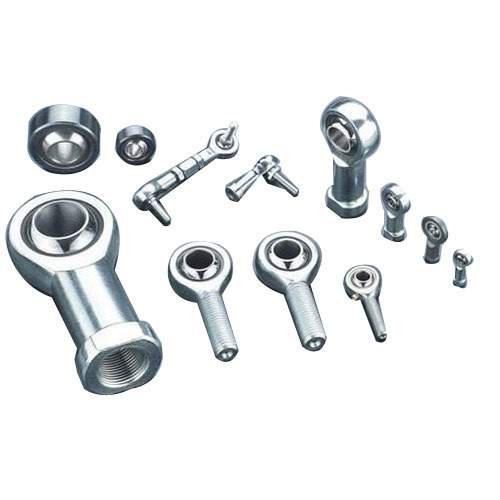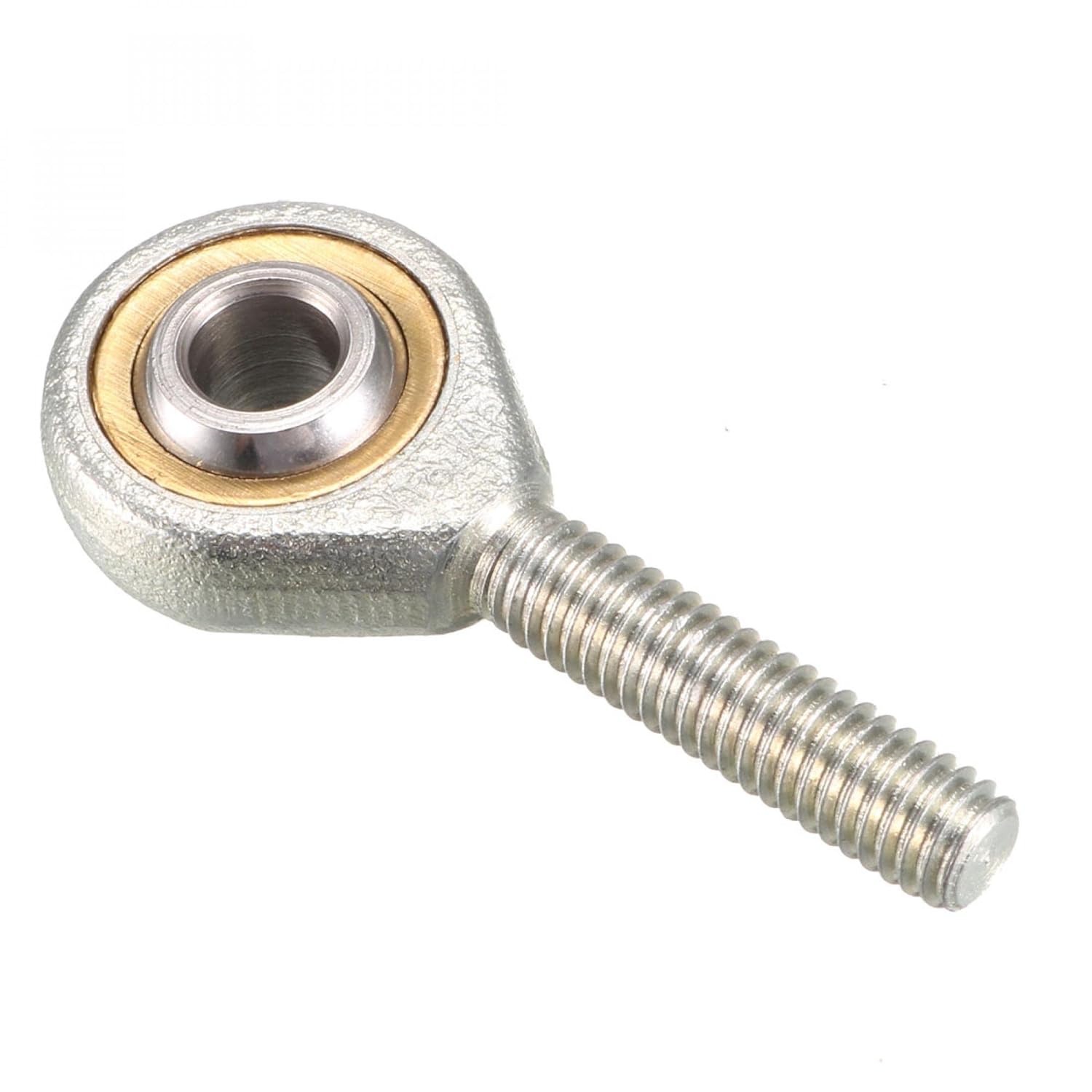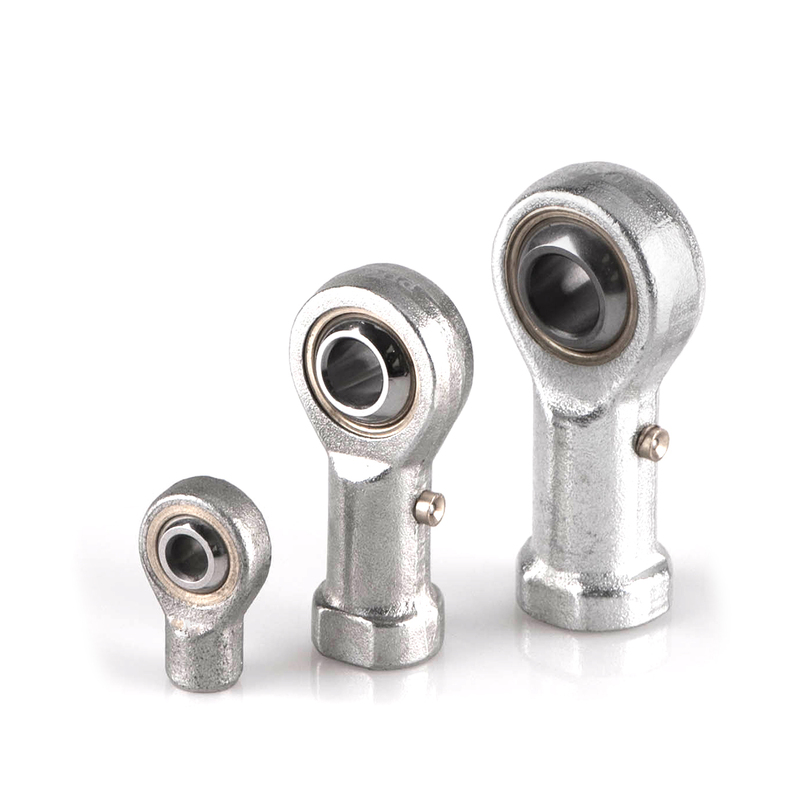
Impact of Temperature Variations and Environmental Conditions on Rod End Bearing Performance
Rod end bearings can be affected by temperature variations and environmental conditions, which may impact their performance. Here’s how these factors come into play:
1. Temperature Variations:
Temperature changes can influence the lubrication and material properties of rod end bearings. Extreme cold can cause lubricants to thicken, potentially leading to increased friction and reduced efficiency. On the other hand, high temperatures can cause lubricants to thin, which may result in inadequate lubrication and accelerated wear. Proper lubrication and material selection are crucial to ensure that rod end bearings operate optimally across a range of temperatures.
2. Contaminants and Moisture:
Industrial environments often expose rod end bearings to contaminants such as dust, dirt, and chemicals. Additionally, moisture and humidity can lead to corrosion and reduced bearing lifespan. Seals and boots can help protect rod end bearings from these elements, maintaining their performance and preventing premature failure. Regular maintenance, including cleaning and re-lubrication, is essential to counteract the effects of contaminants and moisture.
3. Corrosion Resistance:
Rod end bearings are available in various materials, including stainless steel, which offers excellent corrosion resistance. This is especially important in environments where exposure to moisture or chemical agents is common. Choosing the right material for the specific environmental conditions is crucial to prevent corrosion-related issues and ensure the long-term functionality of the bearings.
4. Material Expansion and Contraction:
Temperature variations can lead to the expansion and contraction of materials. This can affect the clearances within the bearing, potentially causing issues such as increased play or reduced load-carrying capacity. Proper bearing design and material selection, as well as regular inspections, can mitigate these effects.
5. Lubrication Intervals:
In extreme temperature or environmental conditions, more frequent lubrication may be necessary to maintain optimal performance and protect rod end bearings from premature wear. Lubricants should be chosen based on their suitability for the given operating conditions.
Overall, temperature variations and environmental conditions can impact rod end bearing performance. Proper maintenance, material selection, and environmental safeguards, such as seals and boots, are essential to ensure that rod end bearings continue to function reliably in diverse operating environments.

Impact of Different Materials on Rod End Bearing Performance
Rod end bearings can be manufactured from various materials, and the choice of material significantly affects their performance. Two common materials used are stainless steel and carbon steel:
Stainless Steel Rod End Bearings:
1. Corrosion Resistance: Stainless steel rod end bearings offer excellent resistance to corrosion, making them suitable for applications in wet or corrosive environments, including marine and outdoor settings.
2. Hygienic Applications: They are ideal for applications in food processing, pharmaceuticals, and medical equipment due to their non-reactive and hygienic properties.
3. Temperature Resistance: Stainless steel can withstand a wide range of temperatures, making these bearings suitable for applications exposed to extreme heat or cold.
Carbon Steel Rod End Bearings:
1. Strength and Durability: Carbon steel rod end bearings are known for their high strength and durability, making them suitable for heavy-duty industrial applications such as construction equipment and agricultural machinery.
2. Cost-Effectiveness: They are often more cost-effective than stainless steel bearings, which makes them a preferred choice when the enhanced corrosion resistance of stainless steel is not required.
3. Machinability: Carbon steel is easier to machine and modify, making it a good choice for customized or specialized bearing configurations.
Ultimately, the choice between stainless steel and carbon steel rod end bearings depends on the specific application’s environmental conditions, load requirements, and cost considerations. Stainless steel is preferred for its corrosion resistance, while carbon steel excels in applications demanding strength and durability.

Applications and Industries Using Rod End Bearings
Rod end bearings find application across various industries and serve multiple purposes due to their versatility and design. Common applications and sectors where rod end bearings are used include:
1. Automotive: Rod end bearings are utilized in vehicle suspension systems, steering linkages, and throttle linkages, contributing to precise control and smooth movement.
2. Aerospace: They play a crucial role in aircraft control systems, ensuring reliable and precise movement in critical flight control components.
3. Construction and Heavy Machinery: These bearings are used in heavy equipment like cranes, excavators, and loaders for precise positioning and movement in various parts of the machinery.
4. Manufacturing: In manufacturing machinery, rod end bearings are employed for automation and motion control applications, ensuring accurate and smooth movement in industrial processes.
5. Agricultural Equipment: Farm machinery, such as tractors and combines, use rod end bearings in steering systems, hydraulics, and other mechanical components.
6. Robotics: Rod end bearings are critical in robotic arms and automation systems, facilitating precise movement and control in manufacturing, medical, and other industries.
7. Marine and Offshore: They are used in marine applications, contributing to reliable control and movement in boat steering systems and offshore equipment.
8. Medical Equipment: In medical devices and equipment, rod end bearings ensure precise and smooth movement, making them essential in applications like surgical robots and diagnostic instruments.
9. Racing and Motorsports: Rod end bearings are used in high-performance vehicles for suspension and steering systems, where precise control is paramount.
10. Material Handling: Conveyor systems and material handling equipment benefit from rod end bearings, ensuring efficient movement and transport of goods.
11. Renewable Energy: They play a role in solar tracking systems and wind turbine applications, helping to adjust panel angles and rotor blades for optimal energy capture.
12. Rail and Transportation: In rail systems and transportation equipment, rod end bearings are employed in various components, including doors, brakes, and suspension systems.
13. Sports and Fitness Equipment: In gym equipment and sports machinery, they provide smooth and reliable motion in treadmills, exercise bikes, and more.
Rod end bearings are valued for their ability to provide reliable and precise movement in a wide range of applications, contributing to the efficiency and safety of various industries.


editor by CX 2024-04-15